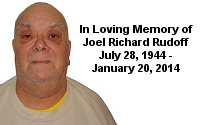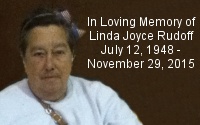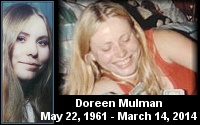| « Ghostbusters 1999 DVD-ROM Menu | Ghostbusters 1999 DVD Press Kit » |
Feature-Length Production Notes
(aka "Tricks & Trivia")
Here are some of my favorite bits of trivia from the subtitled production notes, which were sourced from Don Shay's "Making Ghostbusters" book. This feature was present on the original Ghostbusters DVD in 1999, but was removed from later DVD and Blu-ray releases. It was restored on the Blu-ray released in 2019 via the use of Blu-ray subtitles. As you can see by comparing the images below, the DVD subtitles were big yellow text placed over the black bars under the movie. The Blu-ray subtitles are a more slender white text placed over the bottom of the movie image. (Because the Blu-ray subtitle text is not as easy to read when shrunk down to fit this page, you can click on any of the Blu-ray frames for a larger image.) Also, although the Blu-ray uses the same text as the original 1999 DVD track, the placement is not 100% the same.










"Original Production Notes provided courtesy of Don Shay.
(c) 1985 Don Shay all rights reserved"
The New York Public Library at Fifth Avenue and Forty-Second Street...
was the location of this opening scene.
Originally conceived as two separate establishing shots...
Director Ivan Reitman and Cinematographer Lazlo Kovacs...
chose instead this sweeping crane shot.
This interior is the Main Reading Room of the New York Library.
To film here was a logistics challenge.
The huge room had to be lit, the action staged and photographed...
and then everything cleared away--
all within the hours between the crew's 5:00 AM call...
and the Library's 10:00 AM opening.
We're not in New York anymore.
While the New York Library exterior and vast reading room...
created a perfect Gothic atmosphere, the book stacks flunked their audition.
For "aesthetic and economic reasons," the producers shot these scenes...
at the main branch of the public library in Los Angeles.
The final shooting script called for more than a dozen books...
to suddenly fly off the shelf and land at the feet of the librarian.
But at the last minute, Dan Aykroyd suggested...
this more subtle and eerie approach-- the first of 200 optical effects...
by visual effects creator Richard Edlund and his team.
This next bit of ghostly mischief...
falls in the category of a physical effect rather than an optical effect.
Special effects supervisor Chuck Gaspar built a bank of card cabinets...
rigged with air hoses to spew the cards out on cue.
The librarian had speaking lines in the script, but during production...
her lines were dropped and replaced with screams and whimpers.
The original script called for a "stout, studious-looking girl in her late 20's."
But Alice Drummond as a terrified, fleeing middle-aged librarian...
was a perfect casting decision.
The Ghostbusters logo was refined by artists, but Dan Aykroyd created...
the idea for the logo when he dreamed up the original concept of the film.
In a departure from motion picture tradition...
the production credits were withheld until the end of the film.
In the original script, this graffiti contained an obscene sexual reference...
to Bill Murray's character, Venkman, but director Ivan Reitman thought...
that "Ghostbusters" would benefit-- creatively and economically--
from not being particularly raunchy.
"It has an edge to it," said Reitman, "but it's the kind of film...
parents are comfortable taking their five- and six-year-olds to see."
Harold Ramis, Dan Aykroyd's co-writer, came up with the idea...
of Murray's character giving shocks to the poor nerd.
This idea was based on a real experiment designed to see...
how far people would go in giving shocks to other people.
The scene firmly establishes Venkman as the cynical skeptic of the group.
As was typical throughout the film, the ESP test was shot as scripted...
but with dialogue refinements and added bits of business...
made either during rehearsal or extemporaneously while cameras rolled.
In almost no instance does the scripted dialogue in any given scene...
appear verbatim in the final film.
With a gifted comedy director at the helm, and actors like Bill Murray...
the likelihood of strict adherence to any script was remote.
Aykroyd's speech was filmed in New York when the script still called...
for the library books to be blown off the shelves.
It was changed in Los Angeles in favor of the more subtle floating books...
but it was left to the audience to assume that Aykroyd was describing...
incidents that happened elsewhere in the library or at a later time.
It worked.
Aykroyd was responsible for most of the film's specialized jargon.
"PKE" is an unexplained acronym for "psychokinetic energy"--
one of many technical and quasi-technical terms...
employed throughout the movie.
Dan Aykroyd is a true believer in the paranormal.
He's a member of The American Society of Psychical Research.
He's been intrigued with psychic disturbances and paranormal activity...
since he was a boy.
Dan Aykroyd's original line here was in reference...
to a "multiple high-altitude rockfall."
In postproduotion, Aykroyd looped the famous "mass sponge migration" line.
Several dialogue changes were the result of audience tests...
the producers ran during postproduction.
Murray's line was inspired by a canceled experiment...
proposed by John Lilly, a researcher in dolphin communication...
who proposed drilling a hole in his head to test some higher brain function.
The line-- "That would have worked if you hadn't stopped me"--
was pure improvisation by Harold Ramis.
Though written in such a way that it could be staged later in the studio...
this scene was shot in a caged area inside the main reading room--
all part of the whirlwind shooting session at the New York Public Library.
Much of Venkman's dialogue sounds so characteristically like Bill Murray...
that many critics assumed he had written or ad-libbed all his own lines.
In actuality, most of his lines were scripted for him.
Co-writer Ramis said, "I like putting myself inside Bill's head.
Even if I don't get it exactly, it gives him a strong anchor to play off of."
On his way to the set on the morning this scene was shot...
director Ivan Reitman came up with the idea of this stack of books...
and the new dialogue was hastily written.
The scientists' first contact with the gooey residue, "ectoslime"...
was also a last-minute addition.
This scene did not appear in the final shooting script.
When Dan Aykroyd came to Ivan Reitman with his rough draft of Ghostbusters...
Reitman suggested that Aykroyd and Harold Ramis team up...
to create the final screenplay.
Ramis and Reitman had worked together on Reitman's three previous hits:
"National Lampoon's Animal House," "Meatballs" and "Stripes."
Actress Ruth Oliver was the library ghost in its quasi-human form.
Her scenes were photographed on a stage...
at Richard Edlund's Entertainment Effects Group facility...
in Marina Del Rey, California.
The footage was then composited into the footage shot at the library.
The horrible ghost was a mechanical puppet.
An even more ferocious version was created and rejected...
but it did appear in another film, "Fright Night."
Columbia University gave the film crew permission to shoot on campus...
with the understanding that the school wouldn't be identified by name.
Weaver Hall and the "Paranormal Studies Laboratory" never existed at Columbia.
Though interiors could have been easily shot on soundstages in Los Angeles...
a Columbia building was turned into a "lab"...
by production designer John DeCuir as insurance against bad weather.
If the film crew-- costing $250,00 a day-- couldn't shoot outdoors...
they could film in the lab rather than lose a day in their shooting schedule.
Harold Ramis said, "In our first draft, the Ghostbusters were tossed out...
of a small New England college, and then they go to New York.
But we realized there was something very vital about being in the city...
so we began thinking maybe we should start the film there.
Prior to that, it had been set in a nice converted farmhouse."
The one key person who had no input...
into the script as written was Bill Murray.
"The whole script came together in about three months," said Reitman.
And during that period Bill was off in India.
But it was trust. 'Ghostbusters' was the first film he'd ever committed to...
without fighting like crazy, and he just decided we couldn't fail.
Bill's really great, and on the set, he probably gives more...
than any comic actor around."
The Irving Trust Bank on Avenue of the Americas...
eventually became the fictional Manhattan City Bank--
with the sequence filmed directly across...
from the New York Public Library on Fifth Avenue.
Inflation ran rampant in the film.
In the first draft, the loan interest was $75,000.
On the day this scene was shot, the interest was $95,000.
The firehouse in New York...
and the firehouse in Los Angeles.
The ramshackle condition of the Los Angeles firehouse...
is pretty much the way the producers found it.
They left it in this condition for the meeting with the real estate agent.
Once these initial scenes were shot...
the design team moved in and completely remodeled the interior.
After the movie was finished, the Los Angeles firehouse...
became an artists' studio.
55 Central Park West--
The roof line you see is actually a matte painting.
This particular "stone" Terror Dog is a painting, not a statue.
"Writing for women has not been one of my strengths in the past...
but with Sigourney's contribution, this character...
really grew and strengthened." -- Harold Ramis
The fine for jaywalking in New York was two dollars in 1984.
In 1998 it was $50.
Sigourney Weaver's character, Dana Barrett...
changed dramatically as the script evolved.
Originally, she was to be an alien fugitive from another dimension...
which transforms itself into human female form.
The role of Louis Tulley was written for the late John Candy.
When shooting started, John was no longer available.
"Fortunately, Rick Moranis was, and he really helped to tailor the character.
He came up with the idea of Louis being an accountant, and the character...
really started to evolve from that point on." -- Joe Medjuck
After the movie was released and doing well...
the producers actually aired this commercial...
with an 800 number on real television.
They got 1,000 calls per hour...
24 hours a day...
for six weeks.
The sprawling apartment house interiors extended...
over two adjoining soundstages on the Burbank Studios lot in Los Angeles.
They needed all the extra space...
for the physical effects crew to do their construction.
Tiny cuts were made on the eggshells with a small electric saw.
Each cut was filled with plaster, then sanded smooth and painted.
During the filming, air was injected into the eggs from below...
causing the eggs to split along the cuts and spill out onto the countertop.
The countertop was actually a Teflon-coated aluminum sheet...
heated from below with propane.
Note the Stay-Puft marshmallow bag.
Dana is about to make a chilling discovery.
A complex optical composite pieced together...
from elements generated primarily for other scenes in the film.
It's a preview of special effects horrors yet to come.
The producers had three different signs to hang over the door...
because the rights to the title-- "Ghostbusters"--
weren't resolved until four weeks into shooting.
The movie was almost called "Ghoststoppers."
In all previous drafts...
the basic vehicle from which the "Ectomobile" would evolve...
was specified to be a 1975 Cadillac ambulance.
It was originally supposed to cost the Ghostbusters $600.
By the time the film was shot, the Cadillac had aged.
A 1959 model won the audition, and the price skyrocketed to $4,800.
"The firehouse in Los Angeles is a huge place-- three stories high.
All of the scenes that were supposed to take place in the firehouse...
were actually filmed in the firehouse.
The building itself happens to be in a really crummy section of town...
which is used a lot for filming.
We were running into the "Hill Street Blues" all the time." -- Joe Medjuck
Though the script had love interest developing...
between Janine and the blissfully out-of-it Spengler...
most of the budding relationship wound up on the cutting room floor.
"Once Sigourney Weaver expressed interest in the role of Dana...
we took the character much more seriously.
We had written her as a model, but Sigourney suggested...
it would be much more interesting if she were a musician.
She has such dignity. There is no way to treat her as an object.
And we like the class difference she brought to the part.
She clearly had better breeding than Venkman did." -- Harold Ramis
"I met with Sigourney and Bill, and we talked about their scenes together.
The whole idea was to establish the groundwork...
for a romantic relationship, and yet still maintain a sense of reality...
with Bill and Sigourney reacting to each other...
as two people probably would if those characters...
and those situations were real." -- Ivan Reitman
"it gave Venkman an additional motive for making the Ghostbusters a success--
not only is he out to make money, he is out to rescue this woman...
and prove himself to her." -- Harold Ramis
Bill Murray ad-libbed that Freudian slip on the set.
The false rooftop is a matte painting by Mathew Yuricish.
Although the finished sequence...
bears only a cursory resemblance to the script...
certain elements were retained-- at least in part.
Sigourney Weaver suggested that "game show host"...
was both more amusing and more apropos of Venkman's character...
than "used car salesman"-- as scripted--
and so her line was changed accordingly.
The apartment sets on the soundstage were designed by John DeCuir.
"John's entire crew was really incredible.
We went into Dana's apartment set the night before shooting and said...
"We want this changed, and we want this changed.
The prop people worked all through the night, and the next morning...
the entire set was redressed to our specifications." -- Michael Gross
Some people have said it would be impossible...
for a struggling young cellist to afford this apartment in New York.
"Bill came up with the idea of this guy just blowing it all up front--
'I'm totally in love with you.'
It was a really charming choice and it changed...
the whole tone of the scene.
And so, when Sigourney was able to stand there like a real person...
and say to Bill, 'You are so odd,' it was totally genuine.
And she came up with that line herself.
I loved it because it let the audience off the hook...
and allowed them to say, 'Yeah, he is odd,' so I think Bill...
and Sigourney and Ivan did a great job on that scene." -- Harold Ramis
Bill Murray had a line here-- "What a woman!"
It was cut out during editing.
Another casualty of the editing process was a scene...
about a honeymooning couple on their wedding night at the Sedgewick Hotel.
A foul-smelling ghost pays a visit to their bridal suite...
which prompts this telephone call from the hotel manager to the Ghostbusters.
Dan Aykroyd's original idea for the Ectomobile...
was an all-black, sinister-looking machine.
But cinematographer Lazlo Kovacs pointed out...
that most of the Ectomobile scenes would be shot at night...
and a black ambulance would be hard to see.
It got painted white.
The Sedgewick Hotel exterior and lobby...
are actually the Biltmore Hotel in downtown Los Angeles.
The producers originally wanted to film at the Waldorf Astoria in New York...
but the huge lobby at the Biltmore in Los Angeles...
allowed director Ivan Reitman to create this wonderful tracking shot.
It was a perfect setting to reveal, for the first time...
the Ghostbusters in full regalia.
Dan Aykroyd's fascination with ghostbusting hardware was evident...
from the first draft of the script.
When he was trying to market his story idea to Hollywood...
Dan commissioned artist John Daveikis to make drawings...
of his ghostbusting weapon concepts.
These concepts remained essentially intact through the production process.
Prototypes of the gadgets and field packs were constructed...
out of balsa wood and cardboard by Steven Dane--
with input from Ivan Reitman and Dan Aykroyd--
and then turned over to Chuck Gaspar for actual construction.
"I knew that when they blew the maid away...
with their nutrona wands, we'd get a big laugh.
It's the first time you see the equipment work...
and you get the sense it's the first time...
the Ghostbusters have seen the equipment work.
Too often in movies you have characters...
using equipment they've never seen before, and suddenly they're experts.
I thought it would be funnier...
if the guys were really trigger-happy and nervous...
like rookie cops with loaded weapons." -- Ivan Reitman
Artist Thorn Enriquez was very involved in developing the look of this ghost.
Known by the public as "Slimer"...
the name of this spook was actually "Onionhead."
The room service cart was actually a motorized vehicle...
driven from underneath by one of Chuck Gaspar's crew members.
Where it crashes into the wall, the driver was removed...
and the cart was merely pushed into the wall.
In the script, Harold Ramis knocks on a hotel room door...
and is confronted by a beautiful woman wearing nothing but a towel.
That scene was never shot.
During preproduction, three large-scale Onionheads were sculpted--
one for smiling, one for looking frightened...
and one for use in the drinking scenes.
After the sculpting, the figures were cast in the form of a latex suit...
with facial movements achieved through cable mechanisms.
Mark Wilson wore the latex suits and performed the major actions.
A team of puppeteers produced the subtle, cable-activated expressions.
Oversized props were used in the live-action scenes...
so that when the ghost shots were combined with live-action sequences...
Onionhead would be made to appear smaller than human-size.
"Ectoslime" was a gooey substance made from methylcellulose ether--
a powdered thickening agent used in pharmaceuticals and food products.
All the corridors of the hotel...
were actually shot at Stage 12 of the Burbank Studios.
The set had been built originally for MGM's "Rich and Famous."
But the banquet scenes were actually filmed at the Biltmore hotel.
The ornate facility was occupied by the film crew...
for two days of intense filming and special effects.
They installed this breakaway chandelier and destroyed it.
"From the time we turn on our nutrona wands to try and corner the ghost...
Ivan wanted the scene played as continuous action...
so there's not a lot of directional dialogue here...
with people saying what they are doing.
You see the Onionhead dive behind the bar.
My character opens fire on it...
completely destroying it." -- Harold Ramis
The destroyed walls were actually prefabricated wall panels...
brought to the hotel by the film crew.
The panels were imbedded with pyrotechnic materials...
that could be ignited on cue.
This is a little bit of business that wasn't in the script.
Bill Murray couldn't resist the temptation.
The colorful nutrona beam effects were produced later...
at Richard Edlund's Entertainment Effects Group...
through a variety of animation techniques.
In the first Dan Aykroyd script, the proprietor balked at a mere $500 fee.
In the script, the Ghostbusters emerge from the hotel...
and are swarmed by reporters.
They hold a press conference and sing their television commercial jingle.
That part of the script was deleted, but the montage stayed.
"Most of the montage was shot in one day in New York.
We had been working late the night before with the full crew...
then got up early in the morning...
and went all over town with a small crew, shooting stuff.
We went to Chinatown, Rockefeller Center, Forty-Second Street...
Saks Fifth Avenue and the United Nations, all in one day.
We just made quick stops here and there.
That's pretty much the way Ivan made movies in the old days--
a small crew, moving fast.
We had two small trucks with equipment...
and Danny was actually driving the Ectomobile, having a great time.
And the crowds on Forty-Second Street are real.
You put Bill Murray and Dan Aykroyd on a street corner...
and you have no trouble drawing a crowd." -- Joe Medjuck
The ghost is "Playboy" centerfold Kim Herrin.
These shots are part of a much longer scene that was cut from the film.
The filmmakers thought that the Ghostbuster team...
needed a fourth member who could serve...
as the on-screen voice of the viewing public--
A no-nonsense professional with a major streak of skepticism.
In the early drafts of the script...
Ernie Hudson's role as Winston Zeddemore...
was introduced before the Ghostbusters became famous.
But, on further reflection, it was decided...
to delay Winston's introduction until later...
when the Ghostbusters had begun to build a large clientele...
and could logically use another 'Buster on the team.
Because of the shooting schedule, this was actually the first scene...
filmed between Bill Murray and Sigourney Weaver.
They rehearsed the night before, added new lines...
and shot the scene the next morning.
This dialogue was rerecorded during postproduction...
because the fountain made so much noise...
but whenever the fountain was out of frame, the crew could turn it off.
The location is the Lincoln Center in New York City.
"Gozer is based on several things.
A little more to the point, though, is the fact that Gozer was a name...
that related to a documented haunting in New England--
the one Poltergeist' was based on, in fact.
During this particular haunting, the name Gozer appeared mysteriously...
throughout the house, written on walls and things.
So we figured we might as well take something...
that had been reported in the public domain and use it in the film...
as our main demon and supernatural force." -- Dan Aykroyd
"The original concept for Winston's character was younger and hipper.
At one point, we were talking with Gregory Hines about playing the part.
We also considered getting a young black comedian-- someone like Eddie Murphy.
But, in retrospect, it's probably just as well we didn't.
It would have been just too much.
As it is, there is a nice balance among the four characters.
Winston is the moderate character...
against which the other three play." -- Michael Gross
In Dan Aykroyd's first script...
the ghost storage facility was not at the firehouse itself...
but rather in a deserted Sonoco gas station in New Jersey...
taken over by the Ghostbusters...
and surreptitiously converted into a holding cell for wayward spirits.
This analogy was invented by Harold Ramis...
as a way to explain the enormity of the psychokinetic energy levels...
Spengler is detecting within the city.
"We were delighted with the notion that this script could be so out there...
and yet still have a scientific and parapsychological plausibility.
From a physics point of view, Dan was always talking about things...
like "holes in the plausibility envelope."
Well, I didn't know what that would mean to an audience...
so I came up with this Mr. Wizard kind of analogy...
that then led them into this analogy." -- Harold Ramis
More than 40 matte paintings were used in the film's optical effects.
The mammoth rooftop temple was built in Stage 16 at the Burbank Studios.
It cost more than a million dollars.
The electrical storm effects were created with wind and smoke machines...
crackling spark generators and postproduction sound effects.
The "breakout claw" was a rod-and-cable mechanism operated by Stagehands.
"A balance had to be struck between the terror and the comedy.
The scene where the arms come out of the chair and grab Dana...
is a perfect example.
I wanted it to be scary, but not so frightening...
that it takes all the fun out of it.
In some scenes I was really treading a thin line." -- Ivan Reitman
The door is actually made out of a thick sheet of latex rubber.
The indentations were quite simple.
Hunks of foam from an earlier marshmallow experiment...
were attached to makeshift handles and pushed against the latex from behind.
The arms were created...
in the Entertainment Effects "Ghost Shop"...
and were worn as glove appliances by three puppeteers...
who positioned themselves beneath the chair or otherwise out of camera range.
The "nerd party" evolved from an idea suggested by Rick Moranis...
shortly before photography began.
To retain the comedic flow of Louie's blithering monologue...
Ivan Reitman shot the entire party sequence--
up to the Terror Dog's appearance-- as one long take.
This Terror Dog is a full-size, cable-operated puppet.
This dog is a stop-motion miniature animated frame by frame.
Back to the full-size puppet again.
And back to the miniature again.
There's a man under the floor operating this full-size puppet.
The miniature Terror Dogs were used for long-shot action scenes like this one.
They were filmed against a blue screen...
and composited into the film in postproduction.
The Tavern on the Green in Central Park, New York City.
The statues were added for this movie.
"Once I had the location, it was very easy...
for me to visualize how the scene should go.
New Yorkers are famous for ignoring pleas for help...
from people who are being shot and maimed right in front of them.
It was a delicious combination of terror, comedy...
and ironic social satire." -- Ivan Reitman
The full-size Terror Dogs...
were used for the expressive close-up scenes like this one.
They were created out of latex rubber molded from hand-sculpted models.
This entrance scene wasn't shot in New York.
It's a facsimile built at the Columbia Ranch in Burbank...
for the later sinkhole sequence.
The doorman is a double for the doorman in New York.
"At this point in the film, Bill's character...
has gone from a cynic to a true believer...
so he takes this situation seriously and behaves like a professional.
He shows real concern for this woman we have come to like...
and we know he's going to do everything he can to save her.
And the audience loves him for it.
There are several funny lines in the beginning of this scene...
that never get the response they normally would...
because the audience is uncomfortable in a suspenseful way.
It's not really until Bill and Sigourney...
start wrestling around on the bed that the audience relaxes...
and feels comfortable enough to laugh." -- Ivan Reitman
In an unusual twist on the directorial cameo, Dana's demonic voice--
reminiscent of Mercedes McCambridge's intonations in "The Exorcist"--
was actually that of Ivan Reitman.
Reitman, in fact, provided all of the unearthly voices in the film...
except that of Gozer.
Sigourney Weaver was placed in a fiberglass body shell...
concealed beneath her flowing gown.
Attached at the waist was a motorized support bar...
which extended through a hidden slot in the wall.
The effect worked well on the first take...
but a shadow of the bar could be seen moving up and down the wall.
The set had to be relit and the scene reshot.
In the final script, this scene was to come right after Rick Moranis...
was attacked by the Terror Dog at the Tavern on the Green...
but other changes during production...
caused it to be moved back in the edited sequence.
Yes, that's a kitchen colander on Rick's head.
It epitomizes the film company's...
definite tongue-in-cheek attitude toward ghostbusting technology.
"For the most part, we wanted the technology...
to look plausible, but decidedly low-tech--
something the guys could have rigged together...
with off-the-shelf parts of one sort or another." -- Michael Gross
In the script, Harold Ramis replies, "Die in what sense?"
The line, and much of Annie Potts's dialogue...
was edited out during postproduction.
In the script, Winston and Stantz discuss the higher implications...
of what may be happening in New York...
on their way to a job at Fort Detmerring.
Since the Fort Detmerring sequence was deleted during editing...
this scene in the Ectomobile was reshuffled to a later spot in the film.
Now the two men are supposedly returning from a job...
exhausted and fearful.
In describing the upcoming special effects sequences...
associate producer Joe Medjuck said, "Because of the special effects...
and the fact that we were using three cameras...
it took a long time between takes to set up.
When everything was ready to go, Ivan would signal for cameras to roll...
and then wait for confirmation from each before yelling 'Action!'
-- Which the people inside the firehouse could barely hear.
Richard Edlund and his crew...
were up on the roof of a building across the street...
and once, when Ivan asked if cameras were up to speed...
Richard said, 'No, we're not ready.'
So Ivan stepped into the middle of the street and yelled, 'Hold it!'
But everyone in the firehouse thought he'd said, 'Action'...
so the smoke bombs went off, the cast came charging out into the street...
and there's Ivan standing right in their midst.
It was like the worst filmmaking nightmare come true...
but Ivan just burst out laughing."
Although the explosion of ghosts...
through the fire hall rooftop was inserted optically...
a physical effect- involving blasts of smoke and harmless debris--
was also used as the building's...
panic-driven occupants pour out into the streets.
Background plates for this effect...
were shot from atop the RCA building by Richard Edlund and his crew.
Ghost imagery-- as with the fire hall ghost geyser material--
was generated and added later in postproduction.
The flying, fish-like ghost that erupts from the subway...
was a reminder of an earlier script draft...
in which the ghosts take over the subway...
and use it to move to uptown New York City.
The taxi driver was originally a dead biker from a scene that got cut.
Rather than lose the chilling effect, he was turned into a cabbie.
No New York street scene is complete without a hot dog cart.
The Onionhead is extra.
To achieve this upcoming explosion...
the set was built to appear as it would look after the explosion.
Then the crew filled it in with balsa wood bricks and breakaway glass.
Inside, 15 air mortars were mounted and filled with wet sand.
When fired under pressure, they acted like invisible shotgun pellets...
to blow out the wall and windows.
The jail scene was shot on location at the actual New York prison facility.
It was later decommissioned by the city.
"The lockup was just a terrible place to shoot.
It was dark and very crowded, with low ceilings and dirt everywhere.
Dan Aykroyd said that if there are ghosts anywhere, it would be there.
And he was right. It had a very eerie feeling to it.
Later, we discovered scratches in the film that was shot that day...
and we were all afraid we'd have to go back there to redo the scene.
Fortunately, Shelley Kahn was able to work around the scratches in editing...
and the reshoot wasn't necessary." -- Joe Medjuck
"Some things are impossible to anticipate as you're writing.
When we actually got to the jail scene...
and saw all those brutes standing around us...
I suggested to Ivan that they watch us and listen intently...
to all this physics and technical stuff we were talking about.
It's a natural, but it's something you wouldn't think of...
until you got to the set...
and saw the physical relationship between everything." -- Harold Ramis
On his way to Dana's apartment...
Rick Moranis's character is attacked by muggers in Central Park.
He calls upon his untapped powers as the Keymaster...
and drives away the muggers with his foul, phosphorescent breath.
But that scene was cut from the final version of the film.
Dana doesn't seem to mind his breath in this scene.
The film crew shot for two days in and around City Hall in New York.
The office of City Council president Carol Bellamy...
was graciously made available...
as a stand-in for the actual mayor's office.
"They usually don't allow film crews to shoot at City Hall...
and they probably never will again.
As careful and courteous as you try to be...
it is still very disruptive." -- Joe Medjuck
Dialogue in the mayor's office...
changed considerably during rehearsals and shooting.
"During one take Dan Aykroyd called the Peck character 'Wee Wienie Winkle'...
and Bill Murray broke up laughing.
That's something he almost never does on camera." -- Joe Medjuck
They needed the National Guard and a loading dock...
but City Hall has no loading dock...
so they shot this scene across the street.
"We had decided we needed a 'go get 'em' kind of line from Bill...
as he jumps into the Ectomobile.
The dailies of that day's shooting were really funny...
because we had all these takes of Bill jumping into the Ectomobile...
yelling a different line each time.
Ivan finally settled on...
'Come on, let's run some red lights!"' -- Michael Gross
Another matte painting-- with animated smoke.
"At the time we were shooting...
the big arrival outside Dana's apartment building...
we still didn't know for certain...
whether we were going to be able to use the 'Ghostbusters' title.
Negotiations were still underway.
I remember going into a phone booth on the corner...
calling Columbia and holding up the receiver...
so they could hear the 300 screaming extras we had tying up traffic...
shouting, 'Ghostbusters! Ghostbusters!'
And I said to them, 'You better damn well get that title!" -- Joe Medjuck
To create the gaping sinkhole...
a hydraulically operated collapsing street was constructed...
at the Columbia Ranch in California...
backed up by the facsimile of the apartment building in New York.
Since no permanent damage could be done to the streets in New York...
the area around the actual apartment house location...
was dressed with large, jutting slabs of simulated asphalt.
The final scene combined shots from the New York location...
and the sinkhole location in California.
The stunt cost $250,000 in 1984.
"It seemed to me that prior to the final battle...
we had to demonstrate-- immediately and simply--
just what they were going up against.
The sinkhole effect showed how tough and violent things could get.
The studio didn't want me to do it.
I was convinced it was a great sequence...
so I stuck with it." -- Ivan Reitman
The apartment building's 35 flights of stairs...
were, in reality, only two flights of stairs.
They were filmed at the Biltmore Hotel.
The remaining flights were added in postproduction...
by the Entertainment Effects Group matte department.
Some of the dialogue was improvised on the spot...
and some was added later in looping.
The rooftop temple scenes were shot on a mammoth set.
Later, the scenes were enhanced with a combination of film techniques:
A matte painting of the New York skyline...
matte paintings of the top of the temple...
animated lightning effects and turbulent skies...
created by injecting clouds of paint into a giant water tank.
This is a matte painting...
with the live action footage rear projected...
onto an open area in the painting.
The two camera pullbacks from the painting and the live action...
had to match precisely.
The position of the lightning bolts in relation to the actors...
was determined in postproduction through a process called rotoscoping.
The Temple Dogs in the transformation scene...
were actually miniatures animated by stop-motion technique.
The Temple Dogs on the staircase...
were full-size figures operated from under the set.
The male dog had longer horns than the female.
The character of Gozer had gone through...
more conceptual changes than any other creature in the film.
"Ivan thought it might be more interesting...
if Gozer was rather androgynous looking, someone like David Bowie.
Someone like Grace Jones would have been perfect.
But by the time we came up with this concept...
it was too late to sign up a big name." -- Joe Medjuck
"I was not convinced it was going to work--
Gozer in five-inch spike heels and a plastic bubble suit.
Ultimately, I think lvan's instinct paid off." -- Harold Ramis
Gozer was played perfectly by the exotic Slavitza Jovan.
The New York skyline was a huge, curving painting...
that covered two-thirds of the soundstage.
It could be lit for either daylight or nighttime effects.
The electrical power required to light this set was enormous.
Whenever the lights went on...
filming in other parts of the studio lot had to be shut down.
It was one of the largest sets ever built.
Ms. Jovan started the flip in the close-up...
but a stunt double completed the flip in postproduction.
The seismic disturbance was accomplished quite simply...
with sound effects and bits of rubble...
released from above by concealed Stagehands.
The New York extras were pelted with harmless chunks of Styrofoam...
released from a giant crane extending out over the crowd.
The voice of Gozer was performed by Paddi Edwards.
This tracking shot was created...
on a miniature set of the streets of New York.
The Stay-Puft marshmallow man was added in postproduction.
This is Columbus Circle in New York.
The Stay-Puft man is an actor on a set, dressed in a latex suit.
After both scenes were shot, they were optically combined.
There were 500 extras in the Columbus Circle scene.
That night, traffic in New York was backed up for miles.
For scenes of the Stay-Puft marshmallow man bursting into flames...
a special fire-retardant suit was rigged with pyrotechnics...
and worn by a stuntman scaling a miniature apartment building.
The marshmallow man was shot in slow-motion...
to enhance his apparent mass.
The explosions were shot at an outside location at night...
and superimposed over combinations of matte paintings, the mammoth set...
and miniature buildings.
In the end, Walter Peck got his just desserts--
two hundred pounds of shaving cream released from a giant crane.
"The movie was over once the marshmallow man exploded.
And as we edited the film...
we just kept making the transition from that moment...
through to their leaving the building shorter and shorter.
There was more dialogue on top-- especially between Dana and Louis--
and we had another sequence in front of the building...
where there was dialogue.
Ultimately, I just cut all that stuff out.
It was over. The movie was over.
And the sooner we got to the credits, the better." -- Ivan Reitman
Search (Reference Library Only)
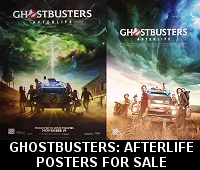

(Ghostbusters Amazon Store)

Please be aware that as an Amazon Associate, I earn a very tiny commission from purchases made though the Amazon links on this site.


|
COMMUNITY LINKS
NEWS • Ghostbusters Wiki • GB News • GB Fans • Ghostbusters Mania • GB Reboot Facebook • Proton Charging News Archive FORUMS • GB Fans • EctoZone OFFICIAL • Ghost Corps Facebook • Ghostbusters Facebook • Ghostbusters YouTube • Ghostbusters.com |

( MY COMPARISON REVIEW )
( AVOID SHIPPINGEASY/STAMPS.COM )
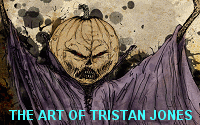
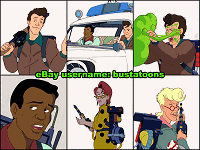
U.S. eBay (Ghostbusters stuff)
U.K. eBay (Ghostbusters stuff)










